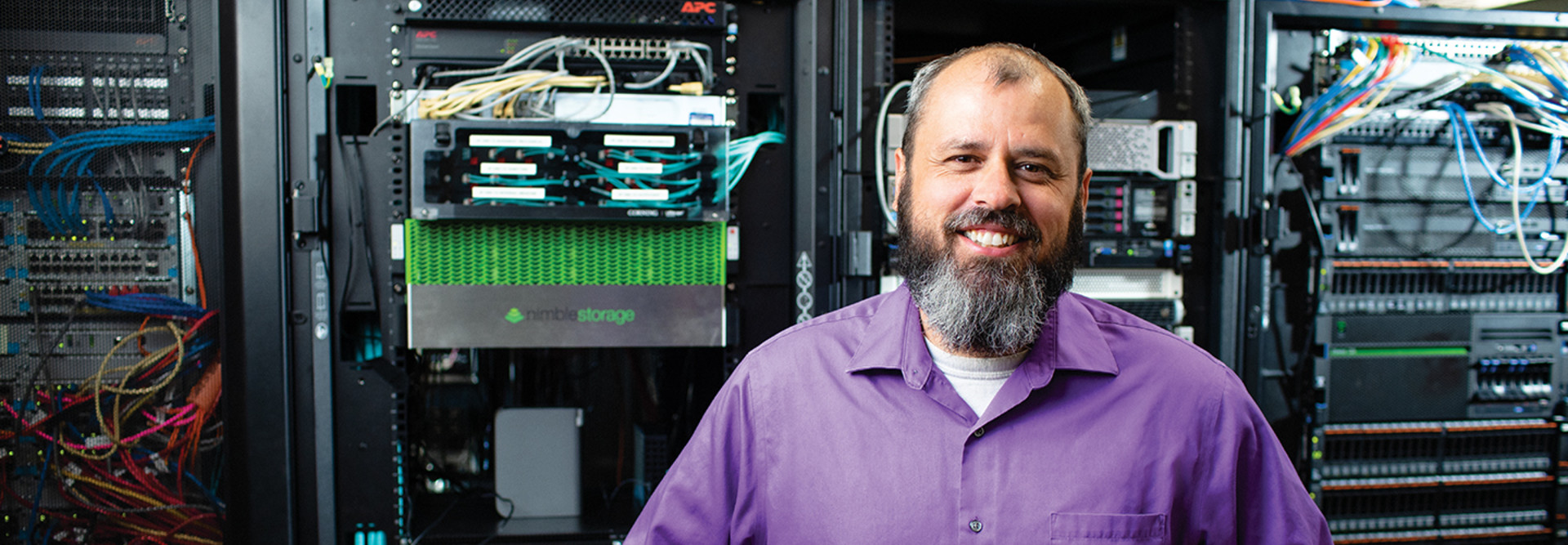Information is the lifeblood of healthcare. As the volume of health data increases exponentially, the need to protect medical records against loss or corruption becomes even more critical.
Staffers at Montgomery County Memorial Hospital in rural Red Oak, Iowa, know this well. Besides being the only emergency care facility within 35 miles, it’s also tasked with safeguarding 70 terabytes of patient health and reimbursement records. To ensure compliance with data protection regulations, MCMH and other organizations need secure and reliable data backup systems.
Until about two years ago, however, the hospital had been relying on an ancient tape backup system that was no longer up to the task.
The hassles were many: A software agent had to be installed on every virtual machine to automate the backup. Tapes had to be manually checked in and checked out; they’d often break or become scratched and unreadable in the process. Restoring records took days, requiring a full-time employee to manage the workflow.
“It was a nightmare,” says Terry Koppa, network administrator for the hospital. “It didn’t do what we needed it to do, and was costing us more than it was worth.”
Koppa’s team isn’t alone. As medical data proliferates and HIPAA regulations mandate secure duplicate record keeping, hospitals are adopting new and efficient methods of backing up their important data — a move that ultimately simplifies the restoration process while saving money.
In early 2017, MCMH migrated to the Commvault Data Platform. At the time, Commvault was the only solution that supported both the VMware and Hyper-V environments in use at the hospital, as well as the IBM AIX systems that host the hospital’s electronic health record data, Koppa notes.
The Commvault platform needs to be installed only once on the host, and it manages all guest virtual machines beneath it, says Reagan Eubank, a network technician for the hospital. And the new system automatically picks up any new VMs when they’re created.
“With our old system, I had no confidence I was getting good backups, and restoring was always really painful,” Eubank says. “Now, it takes me about five minutes to check the backup report each day to make sure everything is working.”
MORE FROM HEALTHTECH: Learn why backup services should be a key part of disaster planning efforts.
Backup and Disaster Recovery Systems Save Time and Money
The move allowed the hospital to establish a disaster recovery site 40 miles away, where it does live replication throughout the day. (Previously, the CIO had to pack up the tapes and take them home each night, Koppa notes.)
The Commvault solution is also significantly less expensive than MCMH’s previous system and provides efficiencies that free up a full-time employee to focus on other tasks.
“In a health information system, having reliable backup and disaster recovery is the most important thing you can have,” Koppa says. “If you can’t trust that it can bring your systems back from a disaster, then it serves you no good purpose.”
Ease of Use Provides Speed and Efficiency
These days, tape systems are largely relegated to long-term archiving, says Charles King, president and principal analyst for Pund-IT.
“Dedicated healthcare solutions, like those offered by Commvault, Veeam and other vendors, offer healthcare organizations the performance qualities they require and are designed to support critical document security and compliance functions,” he says.
Floyd Medical Center, a not-for-profit system of three hospitals and multiple primary care clinics in Georgia and Alabama, had been taking hourly snapshots of all the system’s virtual machines to back up its 750TB of live data, says IT director Lee Jones.
But the solution was far from ideal. “It was a miserable experience,” says Jones. “We couldn’t see into the data to know if our servers had been successfully backed up or not, and occasionally the backups would be corrupted.”
After evaluating a handful of backup alternatives, Floyd chose a Unitrends Recovery 946S appliance in its primary data center and a Recovery 944S in its DR location.
The difference in ease of use is dramatic. “I like to say the interface is so slick it’s greasy,” Jones says with a laugh. “Our staff was able to pick up on it very quickly.”
The Unitrends solution was faster and more efficient from the start. A demonstration of its backup procedure took just five minutes from start to finish; systems from other vendors under consideration took as long as three days to complete the same task.
Speed and stability have since become the norm.
“We had two employees working 40 hours a week trying to figure out whether our servers were backed up,” Jones says. “Unitrends turned that into a five-minute job they do every morning. Now, my staff can do what they’re supposed to be doing — building new servers, implementing projects, managing capacity and optimizing performance.”
READ MORE: Discover how flash storage optimizes backup and recovery for the evolving healthcare landscape.
Constant Backup Keeps Data Safe and Sound
Oklahoma Surgical Hospital in Tulsa, Okla., which performs between 100 to 120 elective surgical procedures each day, installed HPE’s Apollo storage system with Veeam backup and replication to secure its 9.5TB of data.
Veeam takes a snapshot every hour and stores it on an HPE Apollo storage array in the hospital’s onsite data center. Once a night, it copies the data to an offsite DR center in Kansas. If a major disaster struck, the most the hospital would lose is an hour’s worth of data, says Andrew Connel, its IT manager.
Over the past year, OSH deployed a Nutanix solution, which helped lower costs and ease the backup and DR process, says Connel. He adds that OSH is currently investigating Nutanix’s cloud backup solution, which can conduct real-time data replication, booting up new backup servers in under a minute.
“Veeam has a really solid integration with Nutanix, and it’s pretty easy to set up,” says Connel. “I can go to my Veeam console, pick my restore date, and it will create another copy of the virtual machine in Nutanix and boot it up for me. I don’t have to create a virtual hard disk on my own; it handles the whole process for me. That makes it easy to add servers to our backup scheme.”










